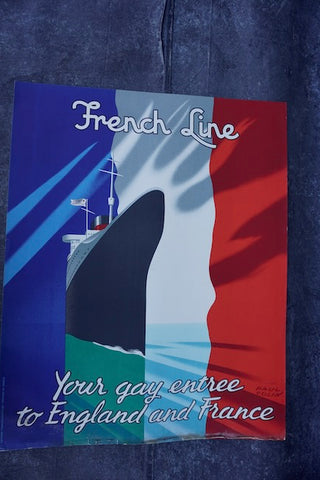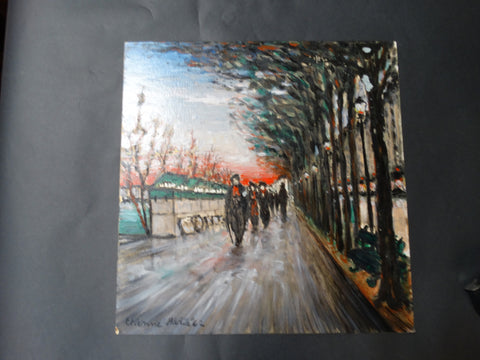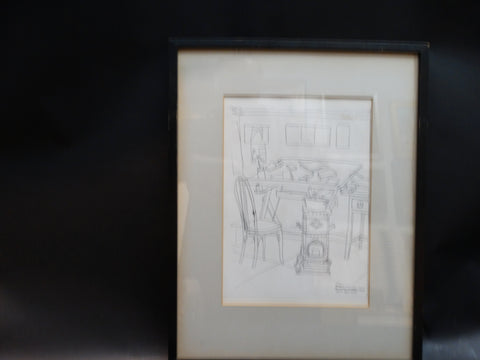Édouard Halouze - A Lady Reclining On A Settee - Pochoir - c 1920s Boudoir Art
Well, first, what is a boudoir, really? It is a woman's private space, for reading a book, or to collect her thoughts, even to just plain simmer down (the word is derived from the French verb bouder, to sulk), and, sometimes, to receive a friend... or a lover. And Boudoir Art? Paintings and prints, usually quite small, that speak to her femininity: images of fashion, and romantic courtship usually, and not to be confused with boudoir photography by a long shot. And these lovely works achieved a certain perfection in the first decades of the 20th Century.
And that perfection is evident in this small masterpiece by Édouard Halouze. The lady is so chic, and SO very very tired. Not really. She is busy being languid and fabulous.
Art measures 4" x 6", and the frame is 9 3/4" x 11 1/2". In excellent condition. Acquired froma collector.
Edouard Halouze(1895-1958), well listed French artist, illustrator and decorator who was a frequent contributor to the Gazette du Bon Ton. He participated in an exhibition dedicated to "Fashion as seen by Painters" at the Musée des arts décoratifs in 1920. He developed a unique style in 1925 due to his use of cubist possibilities in décors, costumes and program covers for the French Music Hall. A Pochoir (French: “stencil”), as distinguished from ordinary stenciling, is a highly refined technique of making fine limited editions of stencil prints. It is often called hand coloring, or hand illustration. The 20th-century artists Pablo Picasso and Joan Miró made prints in this technique for book illustrations.










